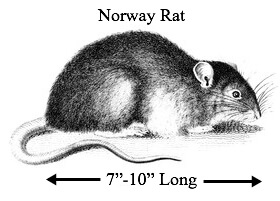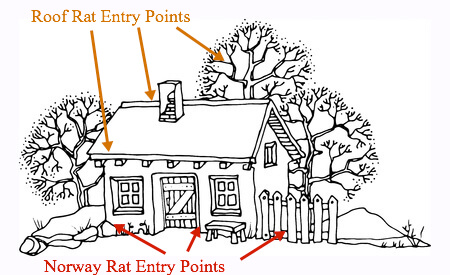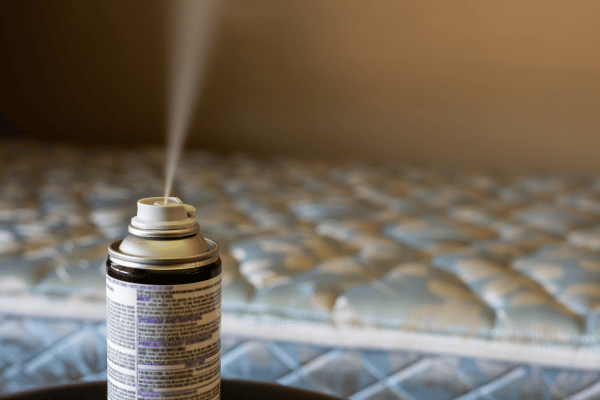- Home
- Trapping Rats
- Rat and Mouse Control
Rat And Mouse Control
This post may contain affiliate links so I earn a commission.
Rat and mouse control techniques rise to a new level of importance when they take up residence inside your home.
Since the rodents carry various diseases such as ratbite fever, bubonic plague, rabies, murine typhus, as well as salmonellosis, a type of bacterial food poisoning, you definitely don't want them sticking around and sharing your food and shelter.
Rats can bite a sleeping child while trying to retrieve bits of food left on unwashed faces or hands.
They also create fire hazards with their natural instinct to chew and gnaw leaving the indoor electrical wiring exposed.

Therefore, prompt control is required if you want to limit the unwanted damage caused by the rodents.
It's important not only for health reasons, but also for the safety of the entire household.
The first step in rat and mouse control is identifying the uninvited houseguests.
Rodent Identification
Three types of rodents cause the vast majority of indoor rat and mice infestations: Norway rats (Rattus norvegicus), roof rats (Rattus rattus) and house mice (Mus musculus).
Many people think rodents are all the same; this isn’t true as each has different habits and preferred indoor habitats.
Knowing the difference makes identification easier, therefore, making rat and mouse control more effective.
Norway Rat
- Large and robust appearance, blunt muzzle, usually reddish-brown with a mostly gray belly, the tail is short and scaly, with the upper portion darker than the underside. Small ears and if folded, won’t reach the eyes, with 3/4-inch capsule-shaped droppings.

Roof Rat
- Typically, smaller than Norway rats, sleek appearance, pointed muzzle, colorations of black, tan and grayish, with a gray belly and the dark, scaly tail is typically longer than the body. The ears are large and if folded, reach the rat’s eyes, with 1/2-inch spindle-shaped droppings.

House Mouse
- Smaller than rats, typically 5 to 7-inches in length, including a 3 to 4-inch tail, coloration ranges from brown to gray, with eyes that are small and black and small, 1/8-inch rod-shaped droppings.

Preferred Indoor Habitats
House mice, roof rats and Norway rats have coexisted with humans for thousands of years; therefore, they have no problem cohabitating indoors.
However, it’s important knowing where each type typically resides so you can appropriately place the traps, leading to success in capturing and alleviating the problem.
Norway Rat Preferred Habitat
- Typically found indoors on ground floors or lower elevations, such as basements or garages. Aggressive species that usually bullies roof rats from their location if both are trying to inhabit the same area.

Roof Rat Preferred Habitat
- Agile climbers, preferring to inhabit enclosed locations in the higher elevations of the house, such as attics, cabinets, inside walls or false ceilings.
House Mice Preferred Habitat
- Found indoors, inside cabinets, drawers and furniture, as well as inside walls and cohabitate with both Norway and roof rats.
Rat And Mouse Control Options
Rat and mouse control consists of three important aspects: rodent-proofing, sanitation and trapping.
Cats have the reputation of taking care of rodent problems, but in reality, they can only handle a small population of one or two.
Rodents have prolific breeding habits, birthing up to seven litters a year consisting of up to 12 babies each, so it’s easy for quick populations rises.
It’s important to note that rats are able to squeeze through openings as small as 1/2-inch and mice only 1/4-inch.
Rats are also good jumpers, reaching horizontal distances of approximately 4-feet and vertical distances of 3-feet.
By quickly implementing the three aspects of rat and mouse control, the rodent problem will soon become an unpleasant memory.
Sanitation
- Keep indoor areas consistently clean and free of food and trash debris.
- Store pet food inside rat-proof containers and don’t leave uneaten pet food out all night for the rodents to feed.
- Store boxes and crates off the floor in an elevated location.
- Prune shrubs or trees leaning against the house or over the roof at least 3-feet from both, therefore, making the rat’s entrance into the structure harder.

Rodent-proofing Your Home
Search for openings leading into the home such as vents, missing soffit covers, exhaust fans, openings around pipes, windows or doorways.
It’s imperative to block all entry points to keep the rodents from reentering.
Once you have blocked all entranceways, check for any breaks in the rodent-proofing materials for approximately two weeks.
Rats and mice will search out any breaks in the material in an effort to gain re-entry, so make repairs using rodent-resistant materials.
- 24-gauge or higher perforated metal, with openings no larger than 1/4 –inch
- 26-gauge or higher sheet metal
- Hardware cloth a minimum of 19-gauge, with openings no larger than 1/4-inch
- Mortared joint bricks
- Cement mortar - 1:3 mixture ratio
- Concrete - 1:24 mixture ratio
Trapping Mice And Rats
Using poisoned bait may seem like an easier alternative than using snap-traps, but it has many downsides.
First, you have to find the dead rodent that will probably die in a hidden location or contend with the decaying smell, which is unsanitary.
Second, you don’t want children or pets to encounter the poison or dead rodent, which can sicken or even kill them.

Using old-fashion snap-traps are the easiest, most effective and cheapest method of rat and mouse control inside the home.
Be sure to place the traps where you have noticed mouse or rat activity.
- Accustom rats to the traps by placing unset snap-traps in locations of rat activity for several days before baiting, as they can be cautious approaching new items. Rats are used to the human smell, so gloves aren’t needed when setting or placing the traps.
- Mice have a curious nature, are used to human smells, so begin with baited traps.
- Place a bait such as a small bit of peanut butter on the plastic bait section of the trap.
- Hold the trap stable with one hand and carefully pull the metal hinge over the baited section and toward the opposite side of the trap, locking the metal edge in the holder.
- Place the trap in the location of the mouse or rat activity, such as right angles to rat runs, along walls, rafters, attics, near holes or behind furniture. Do not place the trap where children or pets can get to it and become hurt. If needed, place baited traps inside boxes or create a barrier to keep children and pets from the trap.
- Place multiple traps approximately 10 to 20-feet away from each other.
- Check the traps daily and discard any dead rodent using gloves. If the infestation is heavy, you may require 12 or more snap-traps. It’s best to use too many traps than using too few. If all the bait is gone and a rodent wasn’t trapped, then you should double the amount of baited traps used.
With persistence and quick action, before you know it you will have your rat and mouse control techniques down to a science and your problem will be solved.



